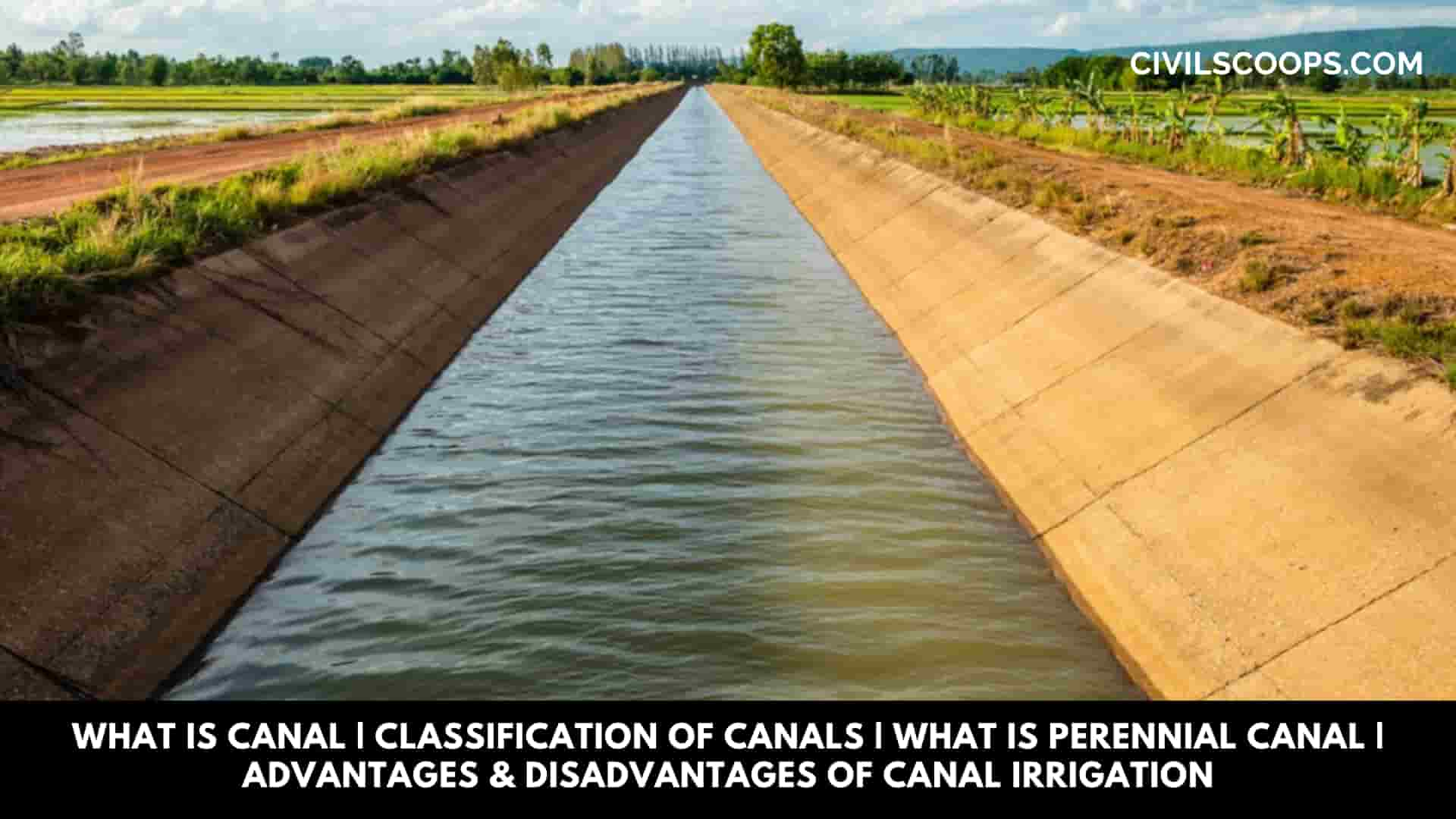
Table of Contents
Introduction of Canal
- Canal plays one of the most important roles in transportation and global commerce.
- The canal is widely used for the irrigation and drainage urban Water Supply, hydroelectric power generation, transportation of cargo and power generation purposes.
- In this article, you will get to know what is a Canal Irrigation and the classification of canals.
What Is Canal?
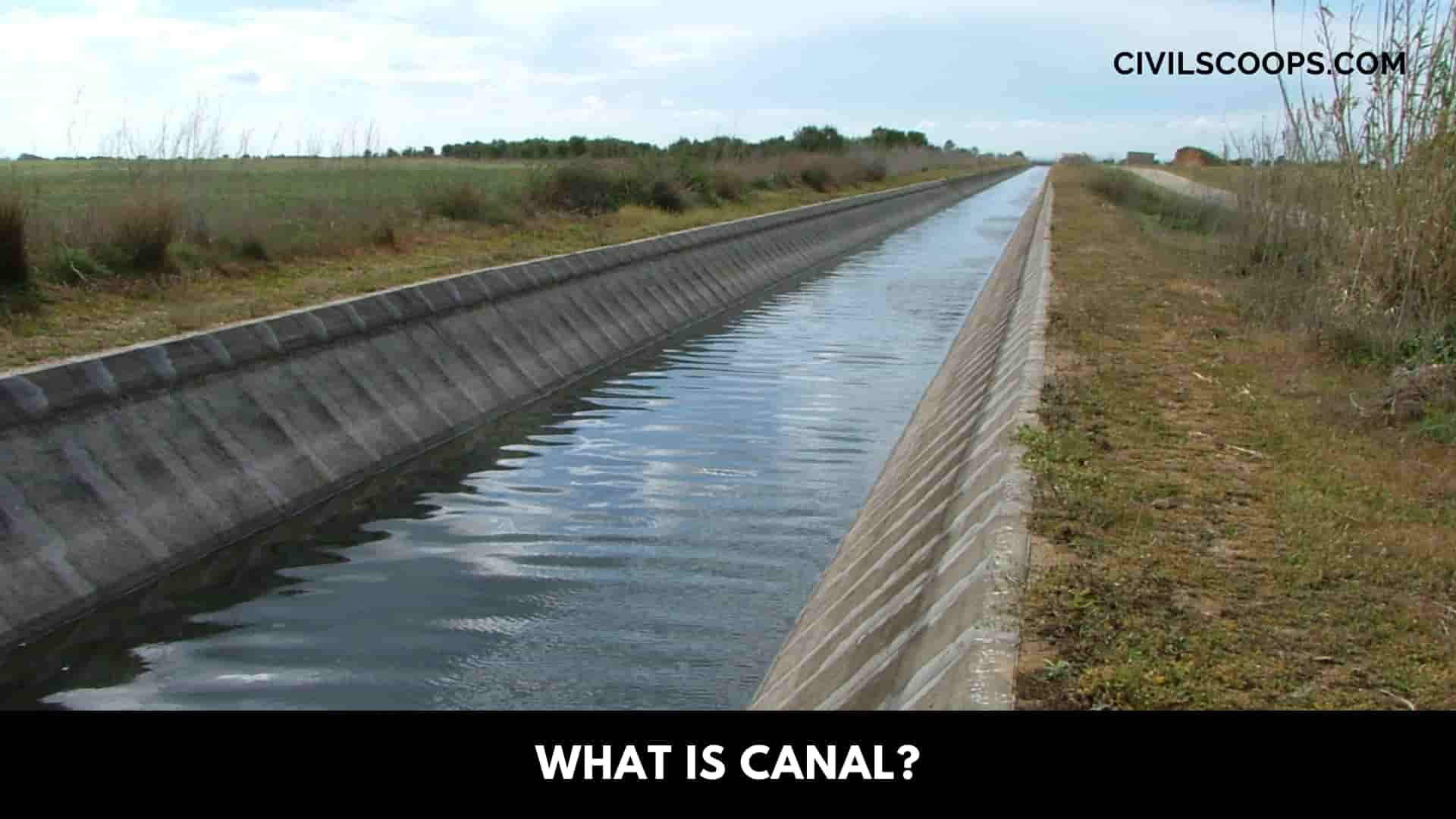
- The irrigation water is conveyed from the reservoir to flow through an open channel of a trapezoidal shape which is known as a canal.
- The canal is a man-made waterway which allows ships and ships and boats to pass from one place to another place.
- Canals are widely used for the transportation of water for irrigation purpose and different human uses.
- In the olden days, the canal is used to connect the waterfalls.
Classification of Canals
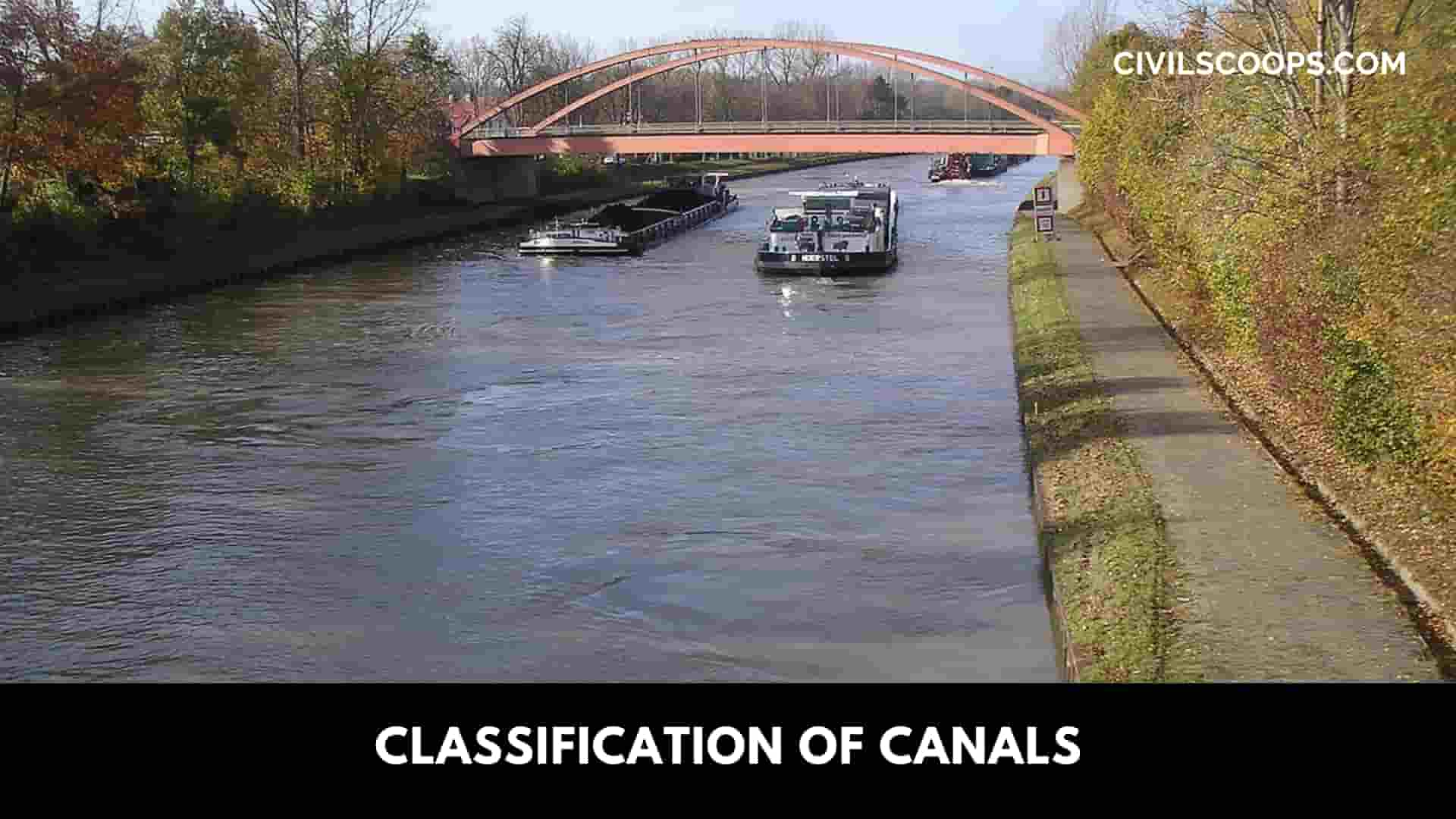
The canals are classified in the different types on the basis of the factor which given are as follows
- Classification of Canals on the Basis of the Usage
- Aqueducts
- Waterways
- Classification of the Canals on the Basis of Discharge
- Main Canal
- Branch Canal
- Major Distributary Canal
- Minor Distributary Canal
- Watercourses or Field Channels
- Classification of Canals on the Basis of Lining
- Unlined Canals
- Lined Canals
- Classification of Candles on the Basis of Alignment
- Contour Canals
- Watershed Canals
- Side slope Canal
1. Classification of Canals on the Basis of the Usage

a. Aqueducts
- Aqueducts is a significant watercourse which carries water from a source to the distribution point. There are various types of Aqueducts.
- There are various types of aqueducts and the simplest types are mostly small ditches which cut into the earth. They run through the underground tunnels.
- The Modern types of aqueducts use the pipeline as their path. This types of canals are used for the conveyance and delivery of water for consumption and other agricultural as well as irrigation purposes.
b. Waterways
- Waterways are the type of canals which are used for carrying ships, boats and people from one place to another.
- The path of waterways is known as the secondary by-product of our countries extensive historical watermark network. It plays a vital role in Transportation.
- This includes the different features like river, streams, canals, lakes, reservoirs and docks.
- Waterways help to provide a safe operating environment by reflecting on the local environment.
- Waterways also help to decrease the carbon footprints and reduce Road congestion and improve the health of the local community.
2. Classification of the Canals on the Basis of Discharge
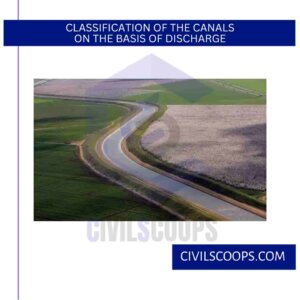
a. Main Canal
- The Canals which has discharged more than ten cumecs is known as the Main Canals. The Main Canal is also known as the Arterial canal.
- The Main Canal is the superior canal of the drainage system which helps to collect the water from the drainage canals and conducts it to the water intake.
- The Main Canal carries discharge directly from the river. It takes off directly from the upstream side of the weir head works.
- The main Canal supplies the water to the branch canal. The Main canal cannot be used for direct Irrigation.
- The Main canal helps to supply the water from a river, reservoir or canal to the irrigated land by the flow of gravity.
b. Branch Canal
- When the main Canal reaches the area where the irrigation is to be done it divides out in two branches which joins to the different parts of the area.
- The Branch canal ends into a Distributary. The branch canals have a discharge which ranges from 5 to 10 cumecs.
- Branch Canal also plays the role of the feeder channel for the major and minor distributaries. Branch channels do not carry direct irrigation but provide direct outlets.
c. Major Distributary
- The canals whose offtake from the Main Canal or the branch canal with the head discharge from 028 to 15 cumecs are known as significant distributaries. The Major distributaries take off water from the branch canals.
- The discharge of the major distributary is less than the Branch canal. Major distributary is also known as irrigation channels because of their supply of water to the field directed through outlets.
d. Minor Distributary
- The canals whose discharge range from 25 to 3 cumecs are known as Minor Distributors. It offtakes from a major distributary.
- Sometimes Minor Distributary also gets the supply from the Branch Canals. The discharge in the minor Distributary is less than the major distributary.
- They also help to provide the courses through the outlets provided along with them.
e. Watercourse or Field Channel
- The Discharge in the watercourses is less than 25 cumecs. A filed channel takes off from a significant distributary or minor and it depends upon the on which extent the irrigation will happen.
- From the channels, water enters into the field of cultivators. Water courses field channels may be constructed by the government on behalf of the cultivators only.
- These are small channels which are known as Field channels generally has a capacity of less than 05 cumecs.
- The death of the water course or field channels is usually less than 1 km having a command of 10 to 15 hectares.
3. Classification of Canals on the Basis of Lining
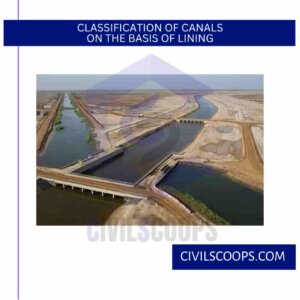
a. Unlined Canals
- Unlined Canal consists of beds and banks which is made up of the natural soil. The underlined canals are not provided with the lining of impervious material.
- It reduces the growth of Aquatic weeds which retards the flow and leads to an increase in the maintenance cost.
- Unlined canals can tolerate velocity not more than 0.7 m/s because of the erosion.
- In case of the unlined canals, there may be a danger of the breakage of the bank of the canal which is caused by the overtopping erosion and animal burrowing.
b. Lined Canal
- Lining canals are provided with the lining of the impervious materials on its beds and the banks to prevent the seepage of water.
- The lining of the canals will help in the water conservation, prevent seepage of water and Helps to reduce the maintenance of the canals.
4. Classification of Canals on the Basis of Alignment
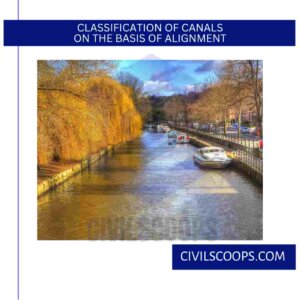
a. Contour Canal
- The control Canal is an artificial canal which is known for being dug Navigable by following the control line of the land.
- In this alignment, the canal generally follows a country except for necessary longitudinal slope. Main Canal is run as control Canal in the header reach. It can irrigate on one side only which is the lower side.
In the control Canal, one of its sides is high so that bank is required only on the other side. There may be a risk of breaching or silting. - The control canal need not follow the same contour. To enable the water to flow by the gravity some surface slope should be given.
- The drawback of the contour alignment is that it irrigates on one side only. Control panels are most suitable in the hilly areas.
b. Watershed Canal
- The watershed canal aligns with any type of natural water shade or ridgeline. It is also known as ridge canal.
- This type of canals usually takes off from the contour canal. It irrigates on both sides. The rich channel is more economical.
c. Side Slope Canal
- In this alignment, the canal is aligned across the contours. There are not any type of cross drainage works are required.
- These candles have steep bed slope and hence linings are necessary to prevent erosion.
What Is Inundation Canal?
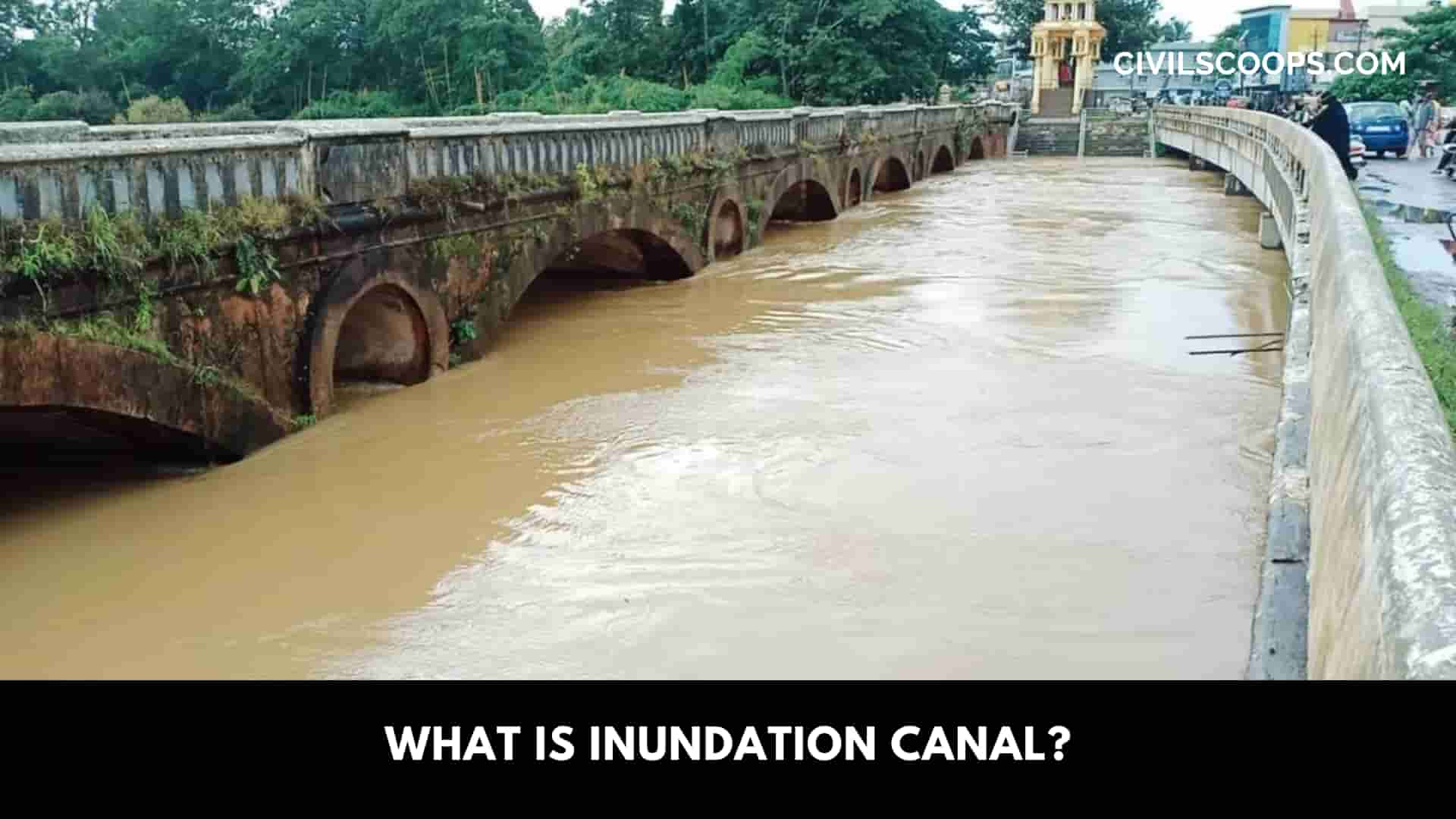
Inundation canals are those which are linked to the large rivers. This type of canal system is constructed along the side of the perennial river.
This canals directly are taken out from the rivers without constructing any barrages or Dam. This type of canals receives water when the river is high enough and especially in flood.
What Is Perennial Canal?
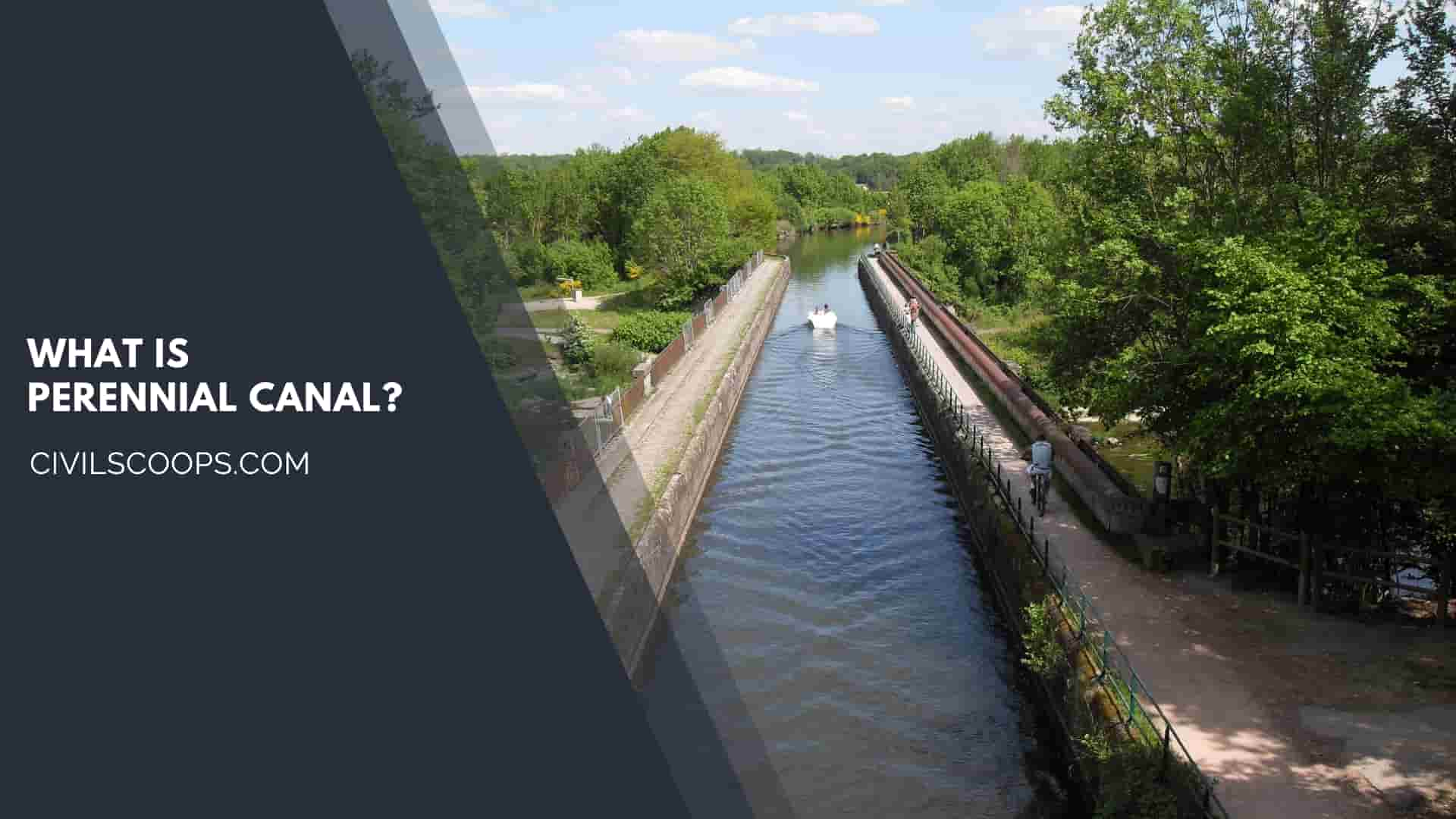
This canal flow throughout the year that’s why it is known as perennial canals. Perennial canal is linked to the dams and to provide water for the irrigation of larger area of land.
What Is Canal Irrigation?
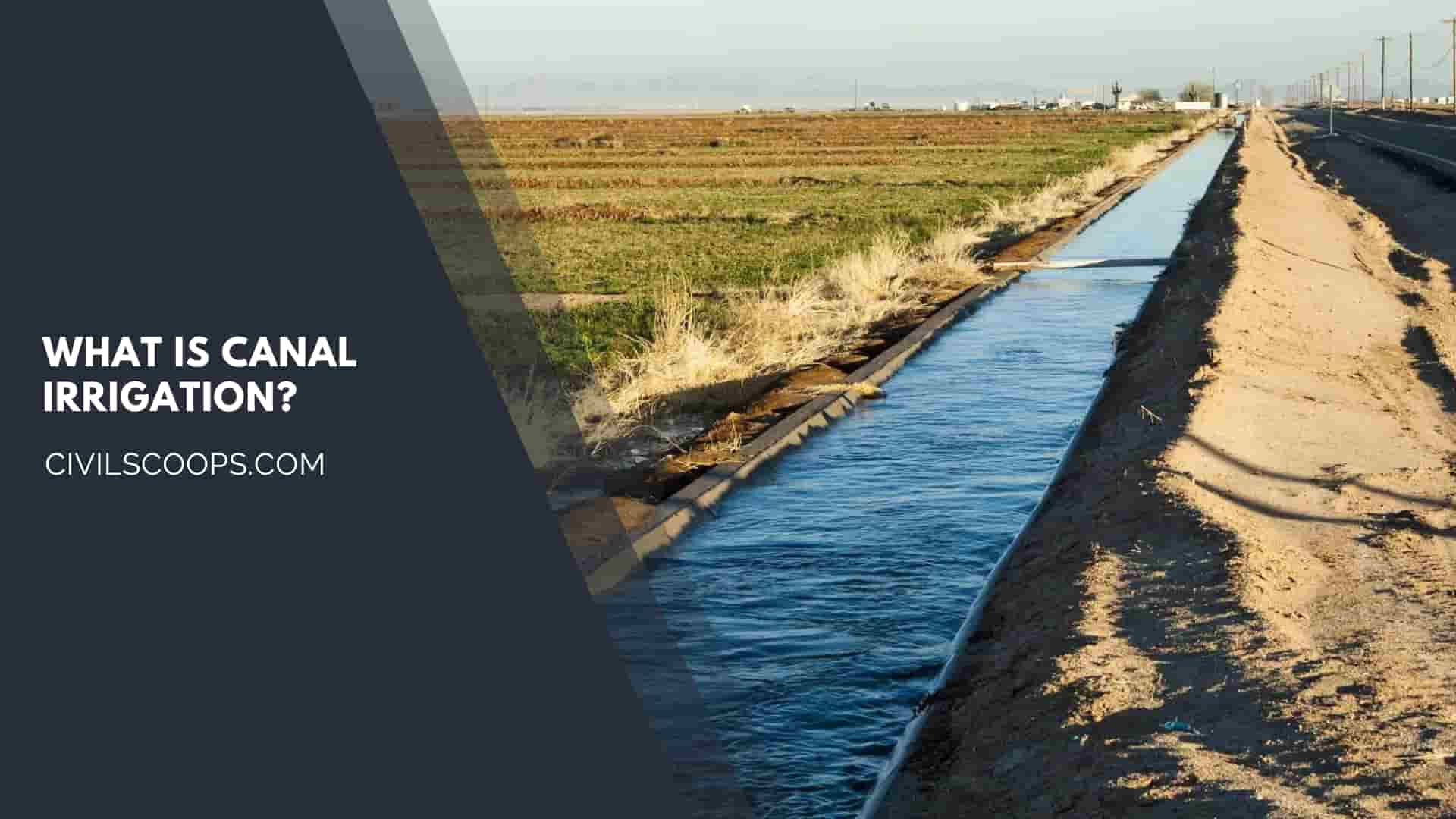
An irrigation canal or lateral is constructed to convey water from the source of supply to one or more farms. The purpose of this practice is to deliver water to the farm irrigation system (s).
Advantages of Canal Irrigation

There are many advantages of Canal irrigation which are given below
- Canal irrigation helps in the development of an irrigated area of waste land.
- Canals can be also used for the purpose of drinking water supply, fishery development and hydroelectricity.
- The droughts can be avoided with the help of construction of the canals.
- Canals help to increase the water level.
- Canals provide higher productivity per hectare land as compared to the conventional method of watering.
- The water requirement of the crop can be fulfilled by the canal with the help of a proper irrigation system.
- Canals are fed by the rainwater from the rivers.
Disadvantages of Canal Irrigation

The disadvantages of Canal irrigation are as follows
- Canal construction required investment and time that’s why it cannot be used for all irrigation.
- Canals required regular maintenance.
- If the water present in the canal in the stationary state then there may be chances of growth of worms and mosquitoes.
- Due to the shortage of water in the inundation canals the crops kit destroyed due to want of water.
Canal
Canal is a manmade waterway that allows boats and ships to pass from one body of water to another. Canals are also used to transport water for irrigation and other human uses.
Types of Canal
- Permanent Canal: A Permanent canal is a type of canal in which water is available throughout the year. This type of canal is generally directed from a permanent source of supply water bodies. Several Permanent hydraulic structures are constructed in this type of canal for water regulation and distribution. A Permanent canal can also be called as a perennial canal.
- Inundation Canal: Inundation canal is a type of canal in which water is available only during the flood periods. These type of canals are taken off from rivers to control the water level in rivers during floods. A canal head regulator is provided to regulate the flow into the canal.
- Irrigation Canal: A canal aligned along the boundaries of cultivatable areas in order to supply water for the purpose of agriculture is said to be an irrigation canal.
- Power Canal: A canal constructed especially for the generation of hydraulic power is termed as power canal.
- Feeder Canal: As the name says, a feeder canal is constructed to feed two or more other canals or branch canals.
- Carrier Canal: A carrier canal is multi-function canal which serves the purposes of both irrigation canal and feeder canal. It means the carrier canal feeds the other canals as well as provides water for direct irrigation.
- Navigation Canal: A canal which is constructed especially for navigational purposes is known as navigation canal. The water level required in a navigation canal is generally a lot higher to accommodate large ships, vessels, etc.
- Alluvial Canal: If the canal is excavated in alluvial soils such as silt, sand, gravel, etc. then it is said to be an alluvial canal.
- Non-Alluvial Canal: If the boundary surface of the canal is of non-alluvial soils such as loam, clay, rock, etc. then it is said to be a non-alluvial canal.
- Rigid Surface Canal: Rigid surface canals also come under non-alluvial canals but here the boundary surface of the canal is lined artificially with a hard layer of lining material such as cement, concrete, stones, etc.
- Protective Canal: Protective canals are relief work projects which are constructed to protect a particular area from the shortage of water. The main objective of a protective canal is to fulfill the requirements of cultivators during the period of famine.
- Productive Canal: Productive canals are those which will produce enough revenue for its maintenance and running costs and also to recover the initial investment made on the construction of the canal. It is said to be good if it recovers 6% of its initial investment per annum.
Canal Irrigation
Irrigation canals are the main waterways that bring irrigation water from a water source to the areas to be irrigated. They can be lined with concrete, brick, stone, or a flexible membrane to prevent seepage and erosion.
Inundation Canal
Inundation canal are the canals that are linked to large Rivers. Such canals use the excess water of rivers at the time of floods and remain operational during rainy season. This type of canals are usually used for irrigation.
Perennial Canal
Perennial Canals flow throughout the year and are thus referred to as perennial canals. They draw water from perennial rivers or from artificial reservoirs which sustain a high water level on the upstream side. During the dry months, such canals are not beneficial.
Ridge Canal
The dividing ridge line between the catchment areas of two streams (drains) is called the watershed or ridge canal. It is suitable for plain areas, where slopes are relatively flat and uniform.This type alignment ensures gravity irrigation on both sides of the canal.
Watershed Canal
The canal which is aligned along any natural watershed (ridge line) is called a watershed canal, or. a ridge canal. Aligning a canal (main canal or branch canal or distributary) on the ridge ensures gravity irrigation on both sides of the canal.
Canal Alignment
Canal alignment may be contour canal, side slope canal, or ridge canal as per terrain of command area. A contour canal irrigates only one side of the canal, and it crosses a number of valleys. Thus, it involves different types of cross-drainage works like aqueducts, under tunnels, superpassages, etc.
Feeder Canal Meaning
A canal serving to conduct water to a larger canal.
What Is Canal?
An artificial waterway constructed to allow the passage of boats or ships inland or to convey water for irrigation.
Classification of Canals
Under this classification canals may be divided into two types:
- Protective canal.
- Productive canal.
What Is Aqueduct?
An artificial channel for conveying water, typically in the form of a bridge across a valley or other gap.
Aqueduct
An aqueduct is a watercourse constructed to carry water from a source to a distribution point far away. In modern engineering, the term aqueduct is used for any system of pipes, ditches, canals, tunnels, and other structures used for this purpose.
Unlined Canals
2. Unlined canal: An unlined canal is the one which has the surface of the natural material through which it is constructed and it is not provided with a lining on its surface.
Types of Canal Lining
Canal linings are classified into two major types based on the nature of surface and they are:
- Earthen type lining.
- Hard surface lining.
Concrete Lining in Canal
Concrete canal lining is often used due to its high structural strength and longevity. Concrete used for canal lining is typically non-reinforced, as a way to reduce cost. A common method for constructing concrete lining is the use of slip forms, which are drawn down the length of the canal as the concrete is poured.
Watershed Canals
A watershed canal, also known as a ridge canal, is one that runs along to a natural watershed (ridge line). Gravity irrigation is ensured on both sides of the canal when it is aligned (whether it is the main canal, a branch canal, or a distributary canal).
Perennial Canal
Perennial Canals flow throughout the year and are thus referred to as perennial canals. They draw water from perennial rivers or from artificial reservoirs which sustain a high water level on the upstream side.
What Is Canal Irrigation?
Canal Irrigation. Irrigation canal is an artificial channel that is the main waterway that brings irrigation water from a water source to the area to be irrigated. They can be lined with concrete, brick, stone or a flexible membrane to prevent seepage and erosion.
Canal Irrigation
An irrigation canal is a hydraulic system whose main objective is to convey water from a source (dam and river) to different users.
Inundation Irrigation
Flood irrigation also called inundation irrigation is an irrigation method that intentionally creates a flooded land condition. This makes the soil completely saturated. After this, occasional natural rainfall is sufficient for the maturity of the crops. Flood Irrigation.
Use of Canal
A canal is a human-made waterway that allows boats and ships to pass from one body of water to another. Canals are also used to transport water for irrigation and other human uses.
Advantages of Canal
Advantages of Canal Irrigation:
Economic development can be expedited by avoiding dangerous droughts. Dependence on rainfall can be minimized through canal development. 3. Canals are fed by rain water received by rivers, and the water is used for irrigation.
Types of Canals
There are two types of canals: waterways and aqueducts. Waterways are the navigable parts of a body of water, and can be located within a bay or open sea, can connect two or more waterbodies, or may even form networks within a city.
Like this post? Share it with your friends!
Suggested Read –
- Bolt Vs Screw | What Is Bolt | What Is Screws
- Difference Between Rafter and Truss | What Is Rafter | What Is Truss
- Load-Bearing Vs Partition Walls | What Are Walls | Classified of Walls
- All About Gabion Wall | What Is the Purpose of the Gabion Wall | Gabion Wall Construction
- All About Transportation of Concrete | What Is Transportation of Concrete | Methods for Transportation of Concrete